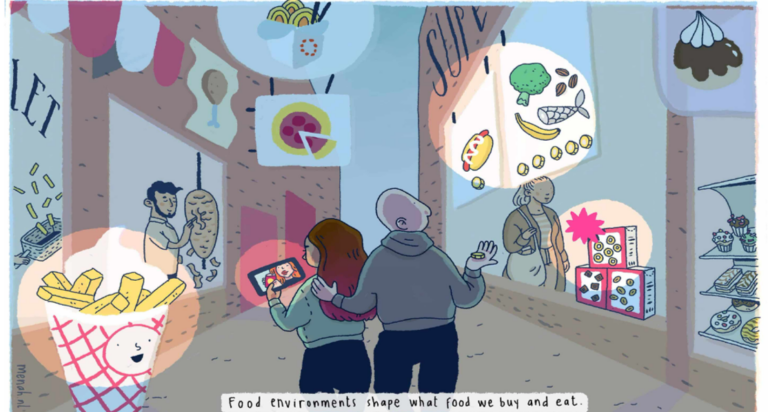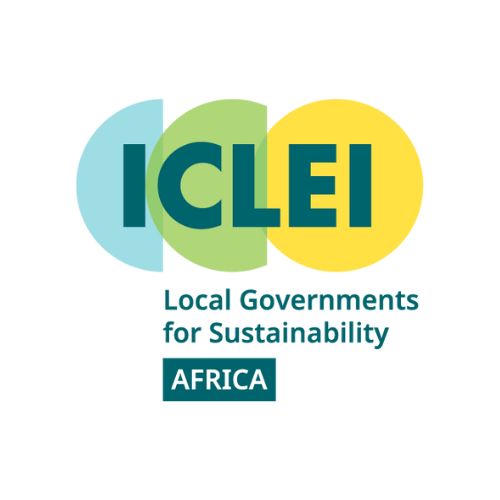Home » Explore the latest project news » Promoting desirable behaviors… and deterring harmful behaviors
Promoting desirable behaviors… and deterring harmful behaviors
Changing the world rather than people
In the fields of health and the environment, a great deal has been done to inform, educate and raise awareness among stakeholders, whether consumers or economic actors, so that they change their behaviour. This is often the first thing we think of so that people eat better, waste less, choose environmentally friendly products, pay farmers more fairly, etc. But the observation made many times is that these measures, however necessary they may be, are insufficient to change behaviour. It’s not enough to know what to do to do it. It also needs to be easy to do, economically accessible, and socially desirable or compliant. Because behaviors that are desirable for society are often constrained by an environment that makes them more complicated, more costly in terms of time, space and money, more atypical compared to what everyone else does. For this reason, it has often been noted that information, training or awareness-raising measures are very limited in changing behaviour. Raising awareness of the value of organic products is of little use if organic products are more expensive or difficult to find. Explaining the harms of the use of plastic bags is not very effective in reducing their use, when there are no simple alternatives and the food is already packaged in these bags when it is sold.
There have also been perverse effects of education and awareness-raising measures. Knowing what to do when it is more difficult and expensive to do results in feelings of guilt. This is called “cognitive dissonance,” which is the disconnect between what we know we should be doing and what we actually do. This leads to a feeling of guilt: we know that we risk poisoning our children with pesticide residues, but we can hardly do otherwise. As a result, and in order to get out of this guilt, we end up refusing to consider the messages we have received, or even rejecting them. It is considered that “it’s not for me; it doesn’t concern me“, or even “it’s not true, it was invented by others to coerce me“. History is full of examples of message rejections: the risk of AIDS, vaccines, climate change, organic products, etc.

It is for all these reasons that the AfriFOODlinks project has proposed experimenting with changes in environments rather than acting solely on the knowledge or awareness of individuals. What are environments? In addition to the cognitive environment provided by education, information and awareness, three other types of environments can be distinguished that determine behaviour:
- The physical environment. This is what makes desirable behaviors easier: products that are available everywhere or are easy to find and use. We can facilitate the multiplication of spaces selling products that are favourable to health or the environment, and we can arrange these spaces to make them more attractive, more accessible, cleaner, easier and more secure.
- The economic environment. This is what makes the desirable behaviour as costly or less costly in terms of money, time, space and mental load than the current behaviour that is to be changed. The desired behavior should be all the less costly if it does not bring as much or more satisfaction than the current behavior. We can tax what we need to avoid and subsidize what we want to do.
- The social environment. This is what allows you to be like everyone else or like the people you want to imitate. A very important determinant of our behaviour is social conformity: we do what everyone else does in order to be socially integrated. Some models – personalities, media stars, influencers – can lead by example (think music or fashion). We can play on these influencers via publicized behaviour of admired or influential people, such as through TV series or social media.

Source: EPHA, 2019
Let us give an example to illustrate our point: if we want to promote the use of bicycles or public transport in the city, it is not enough to launch an awareness campaign on the benefits of these modes of transport. Everyone knows that they pollute less and that cycling allows for a bit of physical activity. But just because you know, it doesn’t mean you ride a bike or take public transport. It is necessary to install safe cycle paths, sheltered bicycle garages, dedicated lines and high frequencies for the passage of buses (physical environment). Bicycles and public transport tickets must be accessible to all, even if they are subsidized (economic environment). Opinion leaders, those we admire or want to emulate, need to set an example and use these modes of transport (social environment).
But promoting cycling or public transport is not enough if, at the same time, we do not fight against what is problematic: the invasion of cities by private cars. It’s the same in the field of food. Changing the food environment isn’t just about promoting desirable behaviours. It also aims to further constrain the behaviours that we want to avoid. Facilitating the consumption of water in the face of an overabundant, ubiquitous supply of soft drinks, sometimes cheaper than mineral water, will have little effect on sugar consumption. Changing the environment can therefore also mean preventing environments that are known to be harmful to health or the environment
Limiting, prohibiting, coercing and legislating are measures that are not fashionable in liberal policies where free enterprise is the model. But let’s not forget that the governance of our cities’ food systems is profoundly unequal: the most powerful actors are rarely those who promote health, the environment and social equity. And it is very difficult for small actions at the individual level to change these power relations. This is where municipalities can play a pivotal role: to arbitrate policy decisions that are in favour of the greatest number of those who suffer from environments that are detrimental to our health and the environment.
Explore
"Governance"

Read more about
"Governance"
READ MORE

Why science, labelling and simplicity matter for food safety
In recognition of World Food Safety Day 2025, held on 7 June under the theme ‘Food Safety: Science in Action’, we explore how science is shaping the way we interpret and respond to food labelling and marketing. This reflection aligns closely with one of AfriFOODlinks core objectives: to promote sustainable, healthy diets and equitable food … Continued



